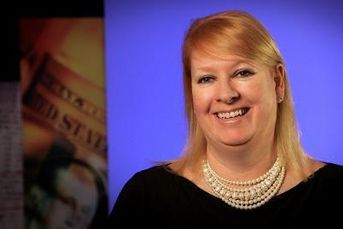Help more women succeed as financial planners
Encouraging more women to join the industry would go a long way toward addressing the looming talent gap and better reflect the marketplace we serve.
That the personal financial planning industry needs more women to join is a no-brainer. The real puzzle is how do we get more women to stay.
It’s no secret the industry has done a poor job attracting and retaining female advisers, creating a gender gap quantified by research and readily apparent to anyone who has attended a conference. Only 23% of certified financial professionals are women, according to the CFP Board, and this imbalance hasn’t budged in a decade. And if we don’t find a way to increase the ranks of women, this disparity will persist. You can’t be what you don’t see.
(More: InvestmentNews’ inaugural Women to Watch list)
Fortunately, the financial planning business is a good fit for the strengths possessed by most women: relationship building, communication and understanding the needs of others. I believe bridging the gender gap, and helping more women succeed as planners, comes down to four things: raising awareness, increasing enrollment in degree programs, helping young women land jobs and providing ongoing support.
RAISE AWARENESS
We as an industry need to expose more young women to the benefits of a financial planning career and start recruitment earlier: reaching out to girls in high school and even middle school. Advisers could offer financial literacy programs to girls-only groups, or educate guidance counselors and career-placement officers on the virtues of our profession.
We also need to increase the industry’s presence on college campuses, and not just among finance or economics majors. The financial planning community needs to reach out to talented young women majoring in the humanities, whose skills sets and desire to help people often mirror those pursuing financial planning degrees.
Individual firms could do more to promote their brand among women, such as securing a spot on the local “Best Places to Work” list. Similarly, advisers can profile women at their firms, letting them share personal experiences in ways that will resonate with other women and spotlight the flexibility and development opportunities available to planners.
INCREASE ENROLLMENT
Women are outnumbered in financial planning programs, but that’s not because they are not capable. University program directors tell me women often are the top performers in their financial planning classes. Our challenge is to help more women join and complete these programs, get their degrees and then get the right jobs.
Educators should take a hard look at their approaches to undergraduate and professional education. Studies show women learn differently than men, so schools may need to look for real-life learning opportunities. Women, for example, often benefit more from experiential, group-based learning.
OPEN DOORS
The next step is helping more women graduates land their first jobs. I recommend that advisers get to know the financial planning program directors at nearby colleges and universities. They are a good source for identifying talented students who would be a good fit for your firm.
Forecast your staffing needs well in advance and start getting to know students early on, through internships, and well before you need to make a hire. The fact is, the best candidates are in high demand for internships and associate positions. Local student Financial Planning Association chapters are another good source, as they often serve as a first stop for women job seekers who appreciate the sense of community provided by professional associations.
ONGOING SUPPORT
The biggest challenge may be finding ways to retain women once they join the industry. Early in my own career, I had many female peers, but over time these peers became fewer and fewer.
Advisory firms need to provide opportunities for mentoring and long-term career support to ensure more women stay in the profession. Mentors are critical for the retention and upward mobility of advisers, because they provide support, advice and opportunities for young advisers, often by observing how they work and suggesting ways they can be more successful. (And, by the way, older advisers can benefit from “reverse-mentoring” opportunities.)
WE CAN DO IT
Fixing the uneven mix of men and women isn’t altruism. Women increasingly own businesses or serve as primary breadwinners. They control more than half of U.S. personal wealth, and that share may reach two-thirds in the next decade, according to the Boston College Center on Wealth and Philanthropy.
I’d like to see an industry that’s evenly split among men and women, and we may finally be headed in the right direction. A recent InvestmentNews survey showed that 49% of entry-level employees, such as para-planners, analysts and associates, were women.
Encouraging more women to join the industry would go a long way toward addressing the looming talent gap, and better reflect the marketplace we serve. Just as we tell clients to diversify their investments, the industry must increase gender and racial diversity if we expect to be sustainable and successful for decades to come.
Kate Healy is managing director of marketing at TD Ameritrade Institutional.
Learn more about reprints and licensing for this article.






